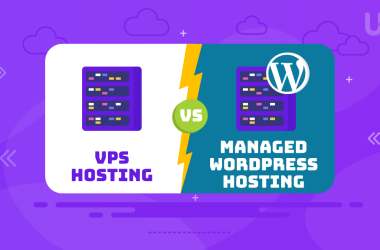LiteSpeed vs Nginx is one of the most highly debated topics when it comes to web server technologies. Each server has unique features and potential, making it appropriate for various requirements and use cases. Knowing the strengths of both LiteSpeed and Nginx will help you decide on the right solution for specific needs.
In this article, we’ll consider the differences between LiteSpeed and Nginx regarding performance, ease of use, scalability, and cost-effectiveness. By the end of it, you will have a pretty fair idea of which web server would be in the best interests of your hosting needs.
What is LiteSpeed?
LiteSpeed forms a revolutionary solution heralding new frontiers in performance, efficiency, and innovation across web hosting. Built on open-source platforms by LiteSpeed Technologies, this has sparked the interest of developers, administrators, and businesses. LiteSpeed powers a rich array of enterprise-level functionality, setting new standards for web hosts.
The architecture of LiteSpeed is built around speed and efficiency by design. The event-driven architecture that LiteSpeed uses allows the operation of a large number of concurrent connections, using minimal resources and keeping responsiveness. Loading times are faster, with smoother user experiences and overall website performance improvement.
Advantages of LiteSpeed
Here are some advantages of LiteSpeed:
- This technology provides impressive performance and efficiency, especially when managing static content.
- Its innovative event-driven architecture allows for excellent scalability, making it suitable for growing applications.
- The configuration and management processes are user-friendly, catering to those who may be new to server administration.
- It also features built-in LSAPI support, which enhances compatibility with various programming languages such as PHP, Ruby, Python, and Node.js.
Disadvantages of LiteSpeed
- The support for modules is relatively restricted when compared to various other web servers.
- It lacks support for .htaccess files, which are frequently utilized in Apache to set configurations for specific directories.
- The community support is smaller than some other web servers, which could affect the availability of assistance and troubleshooting resources.
- There may be possible compatibility challenges when transitioning from different servers.
What is Nginx?
NGINX is widely used free software renowned for its stability, resilience, and high performance as a web server. Its philosophy of offering unparalleled service was built on an extremely innovative, event-driven, and non-threaded design. By processing requests with the CPU, NGINX minimizes queueing to enable lower client wait times, leading to greater efficiency.
In perspective, Nginx executes the role of an HTTP server and a reverse proxy server. Its multifarious capabilities also extend to performing tasks related to hosting or caching applications and web pages with different server configurations. Use of Nginx An increasing trend in the employment of Nginx follows their well-known implementations by popular enterprise stalwarts such as Dropbox or Netflix.
Of special note are Nginx’s implementations of special modules for caching, such as FastCGI, and for efficiently serving PHP frameworks. Its great ability to serve static files out of the box makes it very popular in web server technology.
Advantages of Nginx
- Outstanding performance and efficiency, especially in managing multiple connections and delivering static content.
- Easily scalable and able to manage significant traffic loads effectively.
- Effective use of resources, which makes it ideal for environments with limited resources.
- Strong security features, such as rate limiting, access control, and support for SSL or TLS.
Disadvantages of Nginx
- It can have a steeper learning curve for beginners due to its complex configuration syntax.
- No built-in support for handling dynamic content using scripting languages like PHP or JavaScript.
- Configuration might require more expertise, especially for advanced setups.
- Limited built-in monitoring and management tools compared to some other solutions.
LiteSpeed vs Nginx Comparison Table
| Aspects | LiteSpeed | Nginx |
| Performance | LiteSpeed is effective in delivering both static and dynamic content. Its caching system enhances website speed and reduces server load. | Nginx efficiently serves static content, making it ideal for high-traffic websites requiring speed and scalability. |
| Ease of Use | Its compatibility with Apache makes it easier to adopt. Its GUI and built-in tools simplify management. | Nginx needs you to set it up through text files, which can be harder for beginners to learn. |
| Scalability | LiteSpeed works best for websites that use CMS. | Nginx works well in microservices setups. |
| Security | Built-in security features | Required third-party modules |
| Cost | Paid | Open-Source |
| Integration with Hosting Environments | Yes | No |
Boost Your Web Servers With Top VPS Hosting Option!
Enhance your hosting experience with the comparison of LiteSpeed and Nginx. Discover the best solution for your project and leverage the capabilities of UltaHost’s hosting services. Experience quick VPS Hosting and elevate your website’s performance to new levels!
LiteSpeed vs Nginx Performance Comparision
LiteSpeed is efficient at delivering both static and dynamic content. Out of the box, integration with the LiteSpeed Cache delivers an advanced distributed object cache at the speed of LiteSpeed, expertly tuned for popular content management systems, to accelerate websites and reduce server load.
On the other hand, it is well-known that Nginx efficiently serves the static content with its event-driven, non-blocking design. Hence, it stays in demand for high loads of websites and applications requesting fast performance scalable.
LiteSpeed vs Nginx: Which One is Ease of Use
LiteSpeed is partially compatible with Apache, so users who utilize its configurations within .htaccess files can migrate smoothly to LiteSpeed. Due to an admin-friendly GUI and extra toolkit, management processes have become much more effective.
On the other side, Nginx requires manual configuration via texts, which beginners may hardly learn. Although Nginx has had thorough documentation and a live community, there are tons of resources for debugging as well as optimization.
LiteSpeed vs Nginx Scalability Comparison
LiteSpeed and Nginx are highly scalable web servers, each suited to different use cases. The LiteSpeed is particularly effective for content management system (CMS)-driven websites like WordPress, Joomla and Drupal, where efficient caching and dynamic content delivery play a vital role in performance.
On the other hand, Nginx is well-suited for microservices architectures and is especially beneficial in environments that require robust load balancing and support for containerized applications. Each server has its strengths, making them ideal choices depending on specific needs and scenarios.
Security Comparison Between LiteSpeed and Nginx
LiteSpeed provides a range of strong security features that include built-in DDoS protection, compatibility with mod_security rules, and advanced measures for preventing malware and brute-force attacks.
In contrast, Nginx tends to rely on third-party modules to enhance its security. While it offers basic security measures, users frequently need to integrate additional tools, such as Web Application Firewalls (WAF), to achieve a higher level of protection. Consider utilizing Secure WordPress Hosting for high-level security and data protection is advised.
Cost Differences Between LiteSpeed and Nginx

LiteSpeed operates on a tiered pricing model, so it is a paid solution that may be less accessible for smaller projects. However, the performance advantages it provides can often justify the investment for larger enterprises and high-traffic websites.
But compared to it, Nginx gives out the free Open Source version, suiting quite enough for many people’s requirements, with advanced versions allowing enterprise-grade functionality possible through the use of paid packages like Nginx Plus.
Integration with Hosting Environments
LiteSpeed is designed to integrate effortlessly with various hosting environments and control panels, including popular options like cPanel and Webmin. It features built-in caching plugins that significantly improve the performance of platforms such as WordPress and Magento, among others.
On the other hand, Nginx also offers good integration with hosting setups, especially with dedicated hosting servers. Still, it typically necessitates extra configuration when working with Content Management Systems (CMS), caching mechanisms, or control panels.
Conclusion
Both LiteSpeed and Nginx are robust web servers that serve different purposes. LiteSpeed is the superior choice if your main focus is on performance for dynamic content and user-friendliness. On the other hand, if you are looking for effective delivery of static content and support for reverse proxy setups, Nginx is the better option.
Are you ready to start an improved hosting experience? Discover UltaHost’s advanced VDS Hosting services and stay ahead in the constantly changing web server landscape. Here’s to effortless hosting and the success of your website!
FAQ
What is the primary difference between LiteSpeed and Nginx?
LiteSpeed is optimized for dynamic content and offers built-in caching solutions, while Nginx excels at serving static content and handling reverse proxy setups.
Which is better for WordPress: LiteSpeed or Nginx?
LiteSpeed is better for WordPress due to its LiteSpeed Cache plugin and built-in PHP optimization.
Can Nginx match LiteSpeed’s performance for dynamic websites?
Nginx can match LiteSpeed’s performance with additional tools like FastCGI Cache, but requires more manual configuration.
Is LiteSpeed worth the cost?
Yes, LiteSpeed is worth the cost for high-traffic websites requiring robust performance and security features.
How does Nginx’s open-source nature benefit users?
Nginx Open Source allows users to access its core functionalities for free, making it an affordable option for budget-conscious projects.
Does LiteSpeed support HTTP/3?
Yes, LiteSpeed natively supports HTTP/3 for faster and more reliable connections.
Which web server is more secure?
LiteSpeed offers more out-of-the-box security features, while Nginx requires third-party modules for advanced security.










